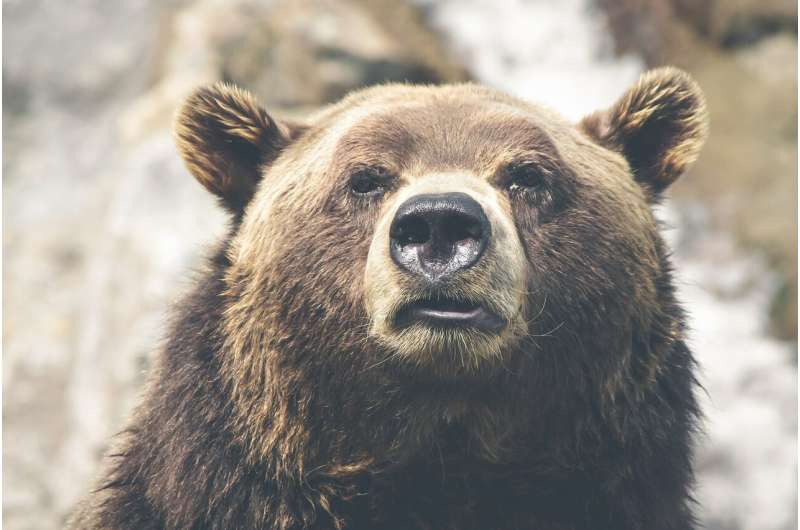This article has been reviewed according to Science X's editorial process and policies. Editors have highlighted the following attributes while ensuring the content's credibility:
fact-checked
reputable news agency
proofread
Were California's grizzlies really ravenous meat eaters? Not so much, new report shows

Forget what you were taught in elementary school about the supposed ravenous meat-eating grizzly bear: New research has found that California's extinct bear was actually more of a vegetarian.
"California's historical record misrepresented" the animal and humans are largely to blame, researchers say.
The grizzly bear was previously portrayed as a massive hypercarnivore, an animal whose diet is more than 70% meat, and a danger to public safety, according to recently published research in The Royal Society.
California was home to as many as 10,000 bears before the Gold Rush in 1848, so numerous that a grizzly is emblazoned on the flag of California. But the grizzly was last seen in California in 1924 and became extinct so quickly there are very few natural history notes available and fewer than 100 historical skins and skeletons in existence, according to the Natural History Museum of Los Angeles County.
But there is an abundance of written historical archives of the grizzly, said Peter Alagona, co-author of the report. As a historian and an ecologist, he said reading and trying to interpret these archives raised a lot of questions for him.
In historical accounts, including available newspaper reports, researchers found that grizzlies were "accused of attacking people and preying on the livestock that proliferated on the open range during California's Spanish Mission and Mexican Rancho eras," the report stated. Such stories played a large role in molding the public's perception of the bear in a mostly negative light.
"It's surprising in the context of the historical sources which really portrayed an entirely different animal, an animal that was very much a product of people's minds [contrary] to what the creature was actually out there doing in the wild," Alagona said.
Alagona, a historian and ecologist at UC Santa Barbara, said the research has a mix of paleontology, history, geography and biology and the information is "holding up a mirror to us and telling us about our own perceptions about the way in which we look at other animals, we're often seeing reflections of ourselves."
The recent study didn't focus on the bear's alleged predatory behaviors against people, but it did find that when ranchers and farmers raised free-range livestock, grizzlies remained largely herbivorous.
Alagona argued the Spanish caused the bears to become more carnivorous by bringing their livestock to California.
The report states that colonial land uses that began in 1769 led grizzlies to moderately increase animal protein consumption. Even so, grizzlies still consumed far less livestock than otherwise claimed, according to the report.
After studying the artifacts of grizzly skulls and teeth, food resources in the region, and human activity, researchers found that the bears derived less than 10% of their nutrition from other mammals and were, therefore, largely herbivorous for a period ahead of the first European arrival in 1542.
The study even compared the grizzlies' diet with that of present-day brown bears living in Mediterranean climates whose diet is dominated by plants. Brown bears are wide-ranging omnivores with diets that vary seasonally, inter-annually and geographically.
In terms of its massive stature, historians got that wrong, too.
Adult grizzly bears have been assumed to reach about 4.5 feet at the shoulder and 8 feet tall when standing, according to California's Capitol Museum. State records show female bears weigh about 400 pounds and males 1,000 pounds, but they could reach 2,000 pounds. Researchers say that by their estimations, the species never made it to the purported historically huge proportions.
"Being able to work together with paleontologists, paleobiologists enabled us to see the story in an entirely new way and really in some ways rewrite the historical ecology of grizzlies in California," Alagona said.
©2024 Los Angeles Times.
Distributed by Tribune Content Agency, LLC.



















